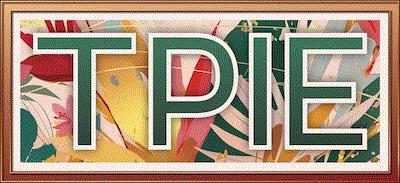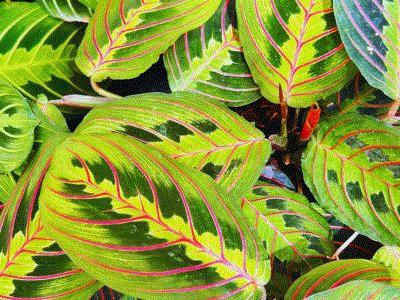TPIE Registration Is Open
It’s time to start dreaming about seeing lush new tropicals in a tropical environment because registration for the 2026 edition of the Tropical Plant International Expo is now officially open. TPIE 2026 will take place January 21-23 at the Broward County Convention Center in beautifully warm Ft. Lauderdale, Florida.

The renovations and upgrades you may have noticed happening at the convention center these last few years are complete, and that fabulous new Omni Hotel connected to it eagerly awaits your arrival. We are promised breathtaking views from the rooftop bar and restaurant.

If the beauty of the surroundings doesn’t spark your interest, the full lineup of educational opportunities surely will. This year’s session tracks include Business Strategies, Garden Center and Interiorscape—I’ve looked over the list and there are just so many good sessions covering trends, work culture, plant maintenance, leadership, AI and so much more.
TPIE has two full-day events for you this time around. The first is the TPIE Road Show taking place January 20, the day before TPIE opens. This full-day tour will hit four tropicals production operations in and around nearby Homestead. This tour always sells out, so SIGN UP for it now. The second full-day event is “Managing the Modern Landscape: Palms, Performance and Property Success.” This will center on palm care, pest control and overall landscape health. You can find more on that session HERE.
REGISTER for TPIE and don’t forget to book your room, too.

Costa’s Carrasquillo Receives Marketing Award
Speaking of South Florida, I have news about an honor being bestowed upon someone at Costa Farms. Costa’s Vice President of Marketing, Mari Carrasquillo, has been named to Ragan Communications’ Top Women in Marketing Awards, Class of 2025. The award, which was presented in October, honors women who are redefining the marketing landscape through innovation, creativity and measurable impact. And it’s a very prestigious award, too, putting Mari in the ranks of other honorees from some other little companies you may have heard of—Amazon Web Services, Cisco, Mastercard and National Geographic.

What Mari has done to receive this honor is no small achievement. She helped elevate a horticulture company in South Florida into a household name. She led the brand redesign as well has helped develop marketing campaigns such as the “All Thumbs are Green” campaign. Mari has helped to position Costa Farms at the forefront of this modern houseplant movement, using storytelling and innovation to connect with new generations of plant parents while reinforcing the company’s role as a cultural driver in the $18 billion U.S. lawn and garden industry.
In other words, she helped millions of Americans fall in love with and obsess over houseplants again.
“This recognition is such an honor,” said Mari in a press release. “At Costa Farms, we believe plants have the power to transform spaces and lives. I’m so grateful to be part of a team that brings this mission to life every day and thankful to Ragan for celebrating women who are making an impact.”
Who else was honored in this year’s Top Women in Marketing Awards? Find the complete list at Ragan.com.

What Real Simple Says
“Forget monsteras and fiddle leaf figs—these will be the most popular houseplants in 2026.” That’s the headline of a piece that appeared on the lifestyle home magazine Real Simple’s site a few weeks ago. Most popular, says who? They gathered some comments from four different houseplant and gardening experts (were you one of them?) to which plants are up-and-comers when it comes to indoor plants.
While the article’s tagline called the following nine plants “new,” you’ll see that many of them are stalwarts in the hort biz. And maybe these are on your growing and/or retail benches already. If you’ve seen an uptick in their demand, maybe this Real Simple piece is why.

On the list of trending houseplants for 2026 are:
-
Alocasia Silver Dragon
-
Philodendron Birkin
-
Bella Palm
-
Rex Begonia
-
Boston Fern
-
Aglaonema Silver Bay
-
Prayer Plant
-
Coleus Chocolate Mint
-
Senecios
“We’re seeing a renewed enthusiasm for plants that not only look beautiful but also make people feel better,” said Donna Letier, co-founder and CEO of Gardenuity, in this Real Simple piece. “The trends for 2026 are rooted in connection with nature, with ourselves, and with the simple joy of caring for something living.”
Read the piece for yourself HERE—you’ll find a few points as to why each plant was chosen. Did they hit the mark? Are there any plants missing from the list? Drop me a note about it HERE. Meanwhile, I have a monstera I need to repot.

Readers’ Thoughts on Rethinking Categorization
In the last Tropical Topics I included an opinion piece from Suzanne Kilgore, Product and Program Development Manager for ForemostCo, about rethinking plant categorization. Essentially, plant categorizations around annual, perennial, tropical and such are not universal, and that becomes an issue when we try to track their sales throughout the country. Can it be refined?
I had several comments from readers in response. This came in from longtime industry consultant Sid Raisch:
“I’m an outdoors person. I spend a lot of time indoors, too. Or, am I an indoor person who spends a lot of time outdoors? Same goes for my plants.
“When I lived in Minnesota, I had some plants I kept indoors from September to May but let them out on the deck the other months. Other plants were kept indoors all year round, and still others I kept outdoors year-round. My sister lives in San Diego and can keep most of the same plant varieties both indoors and outdoors all year.
“Back to being an outdoors person—some of my shoes are hybrid, meaning they are appropriate indoors and outdoors, while others are hiking boots definitely relegated to outdoor wear. It goes on to t-shirts, vests, pants, and while I don’t wear my hats indoors, many people prefer to wear theirs both outdoors and indoors. I have no idea how the apparel industry categorizes these, or if they do.
“I care whether the consumer grows a type of plant. I want to market it to them for both use cases. Why must we categorize plants this way at all, now that we’ve arrived at this era where endless data points are so cheaply and easily tracked? I really don’t care how anyone categorizes indoor vs. outdoor plants but it is irrelevant and won’t box people in to using them accordingly, or selling them accordingly. Selling the plants is what this industry needs to become more focused on—not keeping score whether they’re houseplants or outdoor plants.
“This is where an industry can be buried in the past and not emerge to see the light of the future. This is something Jeff Bezos recognized, understood and then set about creating the world’s first trillion-dollar revenue company.
“Capturing and using data is the ideal job for AI to tackle in any industry to survive in the shadow of giants we never imagined, but are here today.”
Sid attached a video of management consultant Ram Chadran discussing why CEOs (and perhaps yourself) struggle with embracing what data is and what it does. I haven’t watched the whole piece but this fellow is very compelling—see for yourself (fast forward about 7 minutes to get straight to the keynote speaker).
Next up is a response from Pamela Pilling, Garden Centre Manager at Canadian Tire in Kamloops, British Columbia—decidedly not in a tropical zone as she sent her greetings from “the frozen North.”
“All of those points made are valid, from a southern view. For myself, there are many plants considered indoor tropical here used as annuals. Plants like decorative banana, canna, cypress, large elephant ears, can be included with bougainvillea as a year-round grower in warmer climates, and a decorative annual in colder. In fact, as people are becoming more familiar with indoor foliage plants, when using their imagination, the line is even blurrier as to whether a plant could also be used as an outdoor annual. Boston Fern hanging baskets come immediately to mind. They used to be an indoor staple, now I see them more as an outdoor annual. Mixed planter pots and hanging baskets with tropical begonia, spider plants or purple passion vine are becoming popular. The line changes with each zone one moves through. I have seen tea roses used as a summer flowering annual, in Zone 3. So, is that an annual, or tender perennials? Depends on your zone.
“It is almost as if, the ones considered to be Indoor Tropical should only be the ones originating in the tropics, no matter where they are grown and what their use is for. An indoor tropical plant needs to be sold year-round. Look to places that have full winters, no tender outdoor plants and see what sells from September to March. I am thinking Zone 5/6 or colder. These are your true indoor/foliage/tropical plants. Once these plants have been identified, then their year-round sales can be tracked.”
Pamela makes a great point. If you want to weigh in on the discussion, please do! Just email me at ewells@ballpublishing.com.
Finally …
On the topic of tropical plants being used in winter, I’m working on a piece for an upcoming Green Profit article about how to elevate poinsettias, and I could use your help. I’m looking for how you create a premium poinsettia product that makes them way better than anything customers can find at the Big Box.

Do you pair them with other plants to create stunning combos? Do you use really elegant containers or wraps? Do you have an amazingly talented spray painter on staff that blings them out? If so, I want to chat with you about it! Drop me an email HERE and let’s talk. Thanks!
If you have any comments, questions or suggestions for content, email me about them at ewells@ballpublishing.com.

Ellen Wells
Senior Editor
Green Profit
This edition of Tropical Topics was sent to 28,941 loyal readers!
If you're interested in advertising on Tropical Topics, contact Kim Brown ASAP!